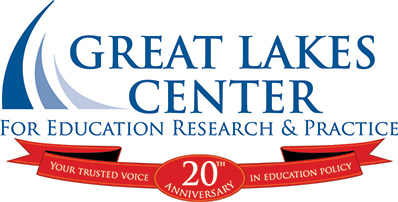
 |
February 25, 2020 |
|
Contacts: Evolution of Career and Technical Education: How to Connect School to Work but Avoid Past MistakesA NEPC Policy Brief Funded By the GLC Key Takeaway: As the popularity of CTE grows, so does the need to ensure that it avoids stratification of the past. EAST LANSING, Mich. (February 25, 2020) — In one of the few bipartisan applause lines of his January State of the Union address, President Trump asked Congress to support his “plan to offer vocational and technical education in every single high school in America.” This bipartisan support for Career and Technical Education (CTE) is also seen in state houses and school districts throughout the US. But despite the popularity of CTE, concerns remain about the availability of resources for different CTE pathways, their relative status, and the degree to which adults working within schools are problematically sorting students explicitly or implicitly into different course-taking pathways. February is Career and Technical Education Month, a time to better understand CTE education. Accordingly, NEPC today is releasing a policy brief, Tracking and the Future of Career and Technical Education: How Efforts to Connect School and Work Can Avoid the Past Mistakes of Vocational Education, authored by Professors Emily Hodge of Montclair State University and Shaun Dougherty of Vanderbilt University, and Dr. Carol Burris, Executive Director of the Network for Public Education. The brief examines the tension that has often arisen between the desire to link learning to post-high-school work and the desire to avoid low academic expectations for students perceived as unlikely to attend college. The brief’s authors explore the question of how schools might meaningfully support career exploration and preparation, while avoiding the tendency of prior vocational education to disproportionately sort students into distinct tracks by ethnic, racial, and/or socioeconomic characteristics. After summarizing the history of vocational education and its relation to tracking, the brief describes how vocational education evolved into CTE, which has emerged as a variety of school-based efforts as also described in the brief. The authors conclude with recommendations for enacting CTE in ways that support the equitable distribution of educational opportunity:
Find Tracking and the Future of Career and Technical Education: How Efforts to Connect School and Work Can Avoid the Past Mistakes of Vocational Education, by Emily Hodge, Shaun Dougherty, and Carol Burris, at: This policy brief was made possible in part by the support of the Great Lakes Center for Education Research and Practice (greatlakescenter.org). The National Education Policy Center (NEPC), a university research center housed at the University of Colorado Boulder School of Education, produces and disseminates high-quality, peer-reviewed research to inform education policy discussions. Visit us at: http://nepc.colorado.edu About The Great Lakes Center - ### - |
|